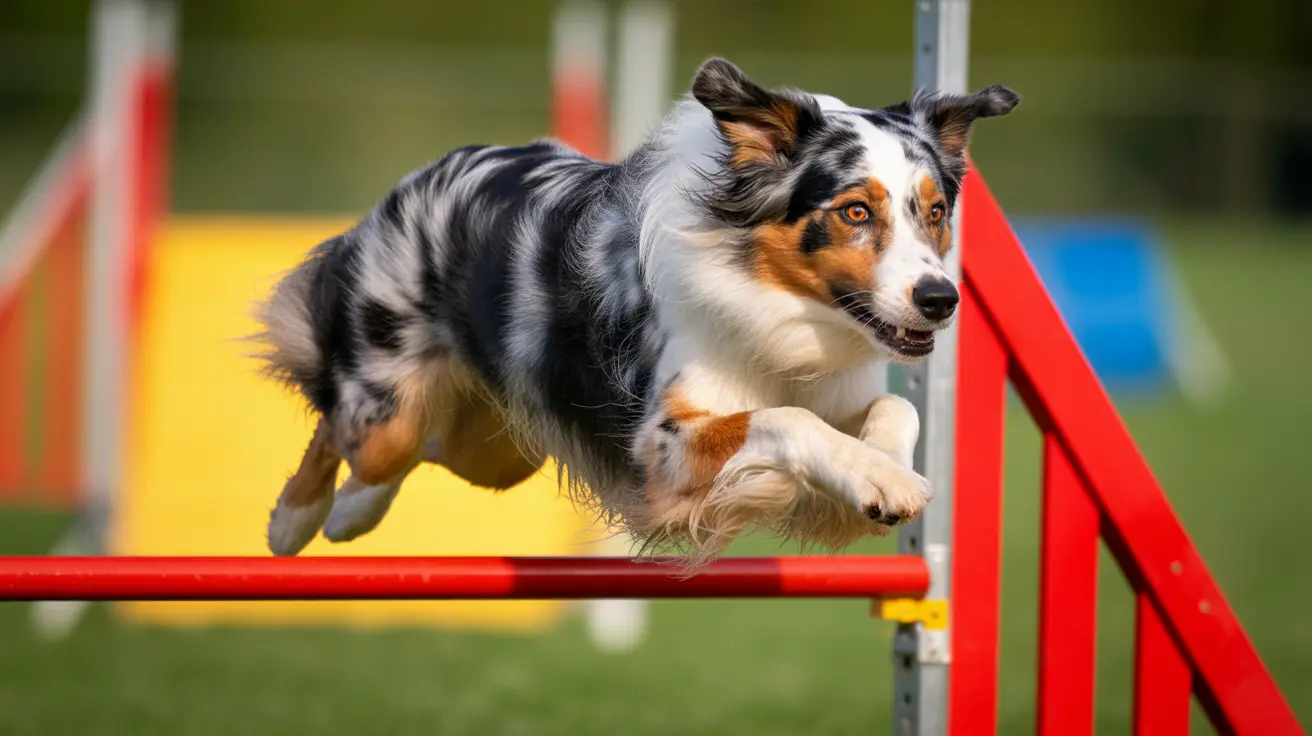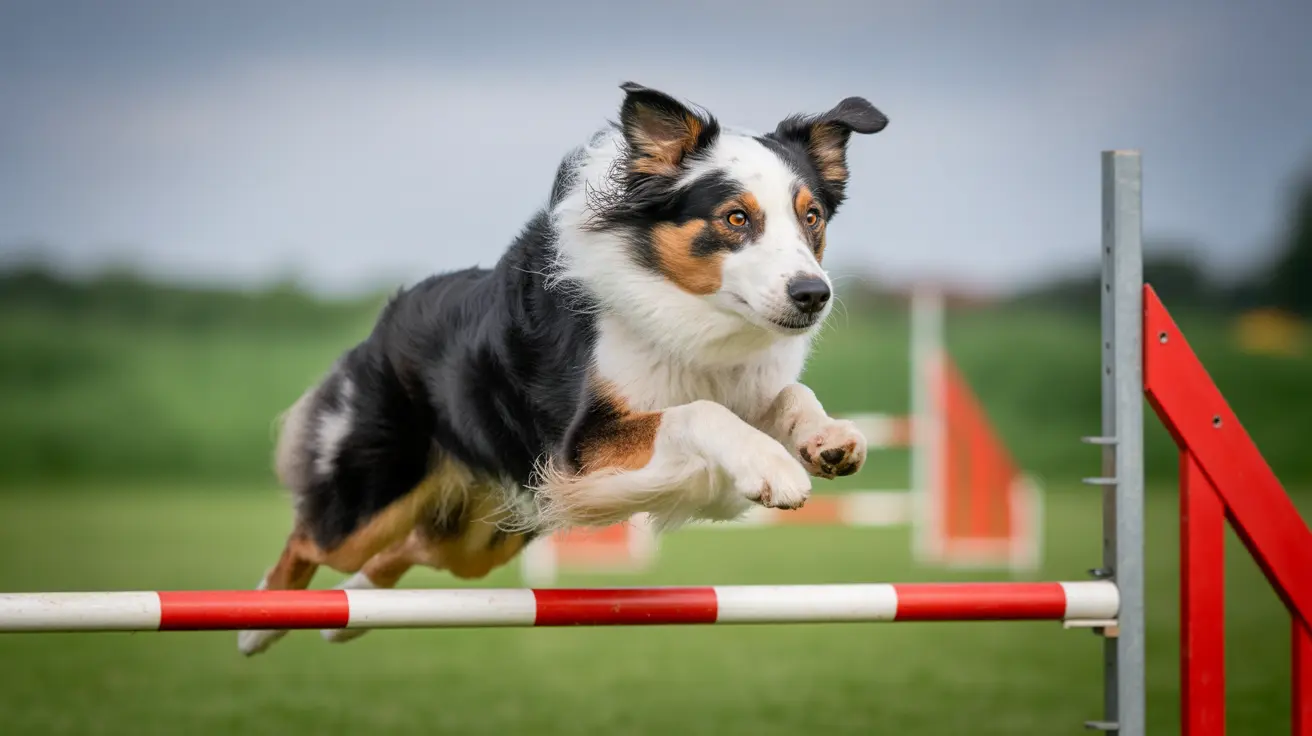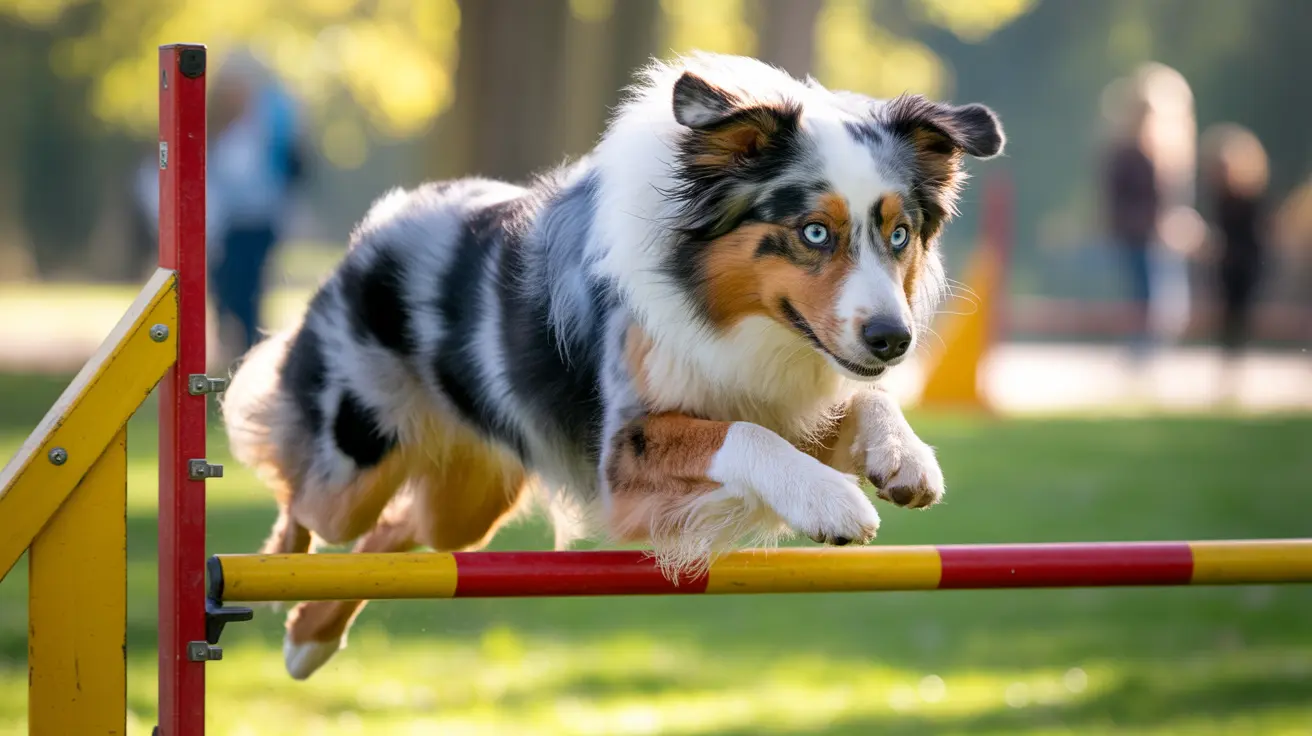The Ultimate Guide to Dog Sports and Activities for Dogs and Owners: Strengthening Bonds Through Fitness and Fun
Dog sports and activities offer an incredible opportunity for pet owners to bond with their furry companions while promoting physical fitness, mental stimulation, and obedience training. These competitive and recreational activities are designed to engage dogs both physically and mentally, often with their owners participating alongside them. Whether you're seeking a casual weekend activity or aiming for competitive excellence, dog sports provide numerous benefits that enhance the overall well-being of both dogs and their handlers.
The world of canine athletics encompasses a diverse range of activities suitable for dogs of all breeds, ages, and ability levels. From high-energy pursuits like flyball and bikejoring to precision-based challenges such as agility and scentwork, there's truly something for every dog-owner team. These sports not only improve physical condition and mental sharpness but also strengthen the human-dog bond through teamwork, cooperation, and shared achievements.
In this comprehensive guide, we'll explore the most popular dog sports and activities available today, providing insights into training approaches, equipment needs, and how to choose the right sport based on your dog's unique characteristics and your lifestyle preferences.
Popular High-Energy Dog Sports for Active Teams
Agility: The Ultimate Test of Speed and Precision
Agility stands as one of the most popular dog sports worldwide, featuring dogs navigating obstacle courses filled with jumps, tunnels, weave poles, and other challenges. This sport promotes exceptional teamwork, coordination, and endurance while being suitable for dogs of all sizes and breeds through adjustable difficulty levels. The beauty of agility lies in its accessibility – courses can be adapted to accommodate different skill levels, making it an excellent entry point for newcomers to competitive dog sports.
Training for agility requires patience and consistency, focusing on positive reinforcement techniques to build confidence and cooperation between dog and handler. Dogs learn to trust their owner's guidance while developing physical fitness and mental acuity. The sport emphasizes the importance of communication, as handlers must effectively direct their dogs through complex course sequences using voice commands, body language, and positioning.
Flyball: Fast-Paced Team Competition
Flyball represents one of the most exciting team-based dog sports, featuring fast-paced relay races where teams of dogs race over hurdles to retrieve balls from a special box. This sport encourages teamwork not only between individual dog-handler pairs but also among team members, creating a supportive community environment. The cardiovascular benefits are substantial, as dogs engage in intense sprinting and jumping activities that build stamina and muscle tone.
The social aspect of flyball cannot be understated – dogs learn to focus on their tasks despite the excitement and distractions of other competing teams. This sport is particularly beneficial for high-energy dogs that thrive in stimulating environments and enjoy the company of other canines.
Bikejoring: Adventure on Wheels
Bikejoring offers an exhilarating experience where dogs pull humans on bicycles using specialized harnesses and connecting lines. This sport is ideal for high-energy dogs that possess strong running instincts and enjoy covering substantial distances. The activity provides excellent cardiovascular exercise for both dog and owner while allowing exploration of various terrains and environments.
Safety is paramount in bikejoring, requiring proper equipment including well-fitted harnesses, elastic lines to absorb shock, and appropriate bicycles designed for the activity. Training should begin gradually, allowing dogs to build stamina and learn proper pulling techniques while ensuring they respond reliably to directional commands.
Precision and Intelligence-Based Activities
Scentwork: Harnessing Natural Abilities
Scentwork, also known as nose work, capitalizes on dogs' extraordinary scenting abilities by having them locate specific scents hidden in various environments. This activity builds confidence and provides significant mental challenges, making it suitable for dogs of all ages and physical abilities. Unlike many other dog sports, scentwork is entirely dog-led, allowing canines to work at their own pace and follow their natural instincts.
The mental stimulation provided by scentwork can be as exhausting as physical exercise, making it an excellent option for dogs that may have physical limitations or for providing enrichment during inclement weather. Training typically begins with simple searches and gradually increases in complexity as dogs develop their skills and confidence.
Heelwork to Music: Artistic Expression in Motion
Heelwork to Music, also known as Canine Freestyle, represents the artistic side of dog sports, where dogs perform choreographed routines set to music. This discipline showcases obedience and tricks while requiring a strong bond and exceptional cooperation between dog and handler. The creative aspect allows for personalized routines that highlight individual dog-handler teams' strengths and personalities.
Training for heelwork to music builds upon basic obedience skills, gradually incorporating more complex movements and transitions. The sport emphasizes positive reinforcement and patience, as dogs must learn to perform specific behaviors on cue while maintaining attention and enthusiasm throughout extended routines.
Low-Impact and Adaptive Dog Sports
Canine Hoopers: Gentle Navigation Challenges
Canine Hoopers provides a low-impact alternative to traditional agility, where dogs navigate courses featuring hoops, barrels, and tunnels. This sport is particularly suitable for older dogs or those with joint concerns, as it eliminates the high-impact jumping required in standard agility courses. The emphasis on flow and smooth movement makes it accessible to a broader range of dogs while still providing mental and physical stimulation.
The sport maintains the teamwork and communication aspects of other dog sports while reducing stress on joints and muscles. Training focuses on developing smooth, confident movement patterns and maintaining engagement between dog and handler throughout course navigation.
Dog Parkour: Urban Agility Adventures
Dog Parkour utilizes urban or natural environmental elements to create agility challenges, building confidence and dexterity in a low-impact format. This innovative approach to canine fitness encourages dogs to interact safely with their environment while developing problem-solving skills and physical coordination. The adaptable nature of parkour means that training opportunities exist virtually everywhere, from city parks to hiking trails.
Training in dog parkour emphasizes safety and gradual progression, teaching dogs to assess obstacles carefully and move with confidence. The sport builds trust between dog and handler while improving balance, coordination, and spatial awareness.
Specialized Training and Competition Sports
Mantrailing: Following Human Scent Trails
Mantrailing involves dogs tracking human scent trails to locate specific individuals, representing a dog-led, non-competitive activity that enhances natural scenting skills and builds confidence. This discipline differs from other tracking sports by focusing specifically on human scent discrimination rather than general tracking abilities. Dogs learn to follow complex scent trails through various environments and conditions.
Training for mantrailing requires patience and understanding of canine scenting behavior. Dogs work at their own pace, following scent trails that may be hours or even days old, developing persistence and problem-solving abilities while building confidence in their natural abilities.
Fast CAT: Pure Speed Testing
Fast CAT (Coursing Ability Test) measures dogs' sprinting speed over a straight 100-yard course, providing an objective assessment of athletic ability. This sport appeals to dogs with strong chase instincts and offers a straightforward competitive format focused purely on speed rather than complex skills or training requirements.
The simplicity of Fast CAT makes it accessible to many dogs, requiring minimal training beyond basic recall and the ability to chase a lure. The sport provides excellent cardiovascular exercise while satisfying dogs' natural prey drive in a controlled environment.
Health Benefits and Joint Care for Canine Athletes
Participation in dog sports provides numerous health benefits including improved physical condition, enhanced mental stimulation, better obedience, increased social interaction, and boosted confidence. These activities contribute significantly to overall canine well-being by providing structured exercise and mental challenges that many pet dogs lack in typical household environments.
Joint health becomes critical for dogs participating in athletic activities. Modern research has identified that supplements containing undenatured type II collagen (UC-II®) combined with omega-3 fatty acids show superior efficacy in reducing pain and inflammation while improving mobility compared to traditional supplements such as glucosamine and chondroitin. This advancement in joint support helps maintain canine athletes' performance and comfort throughout their sporting careers.
Proper warm-up and cool-down routines, attention to safety protocols, and regular veterinary checkups ensure that dogs can enjoy their chosen sports safely and sustainably. Training should always prioritize positive reinforcement, consistency, and gradual skill progression to prevent injury and maintain enthusiasm.
Choosing the Right Sport for Your Dog
Selecting appropriate dog sports requires careful consideration of multiple factors including breed characteristics, age, temperament, physical health, and the owner's lifestyle and available resources. High-energy breeds may thrive in activities like flyball or bikejoring, while dogs with strong scenting abilities might excel in scentwork or mantrailing. Older dogs or those with physical limitations can still participate through low-impact options like canine hoopers or heelwork to music.
Before beginning any dog sport, veterinary clearance is essential to ensure fitness for activity. Many clubs, classes, and events offer opportunities for beginners to explore different sports and find the best match for their dog-owner team. Starting with basic obedience training provides a foundation for success in any chosen sport while building the communication and trust necessary for effective teamwork.
Indoor Training and Equipment Considerations
Many dog sports can be adapted for indoor settings, making them accessible regardless of weather conditions or space limitations. Indoor agility courses can be constructed using household items or specialized equipment designed for home use. This adaptability ensures consistent training opportunities while providing mental and physical stimulation during periods when outdoor activities may not be feasible.
Equipment requirements vary significantly among different sports, from simple items like tennis balls for trick training to specialized harnesses for bikejoring or agility obstacles for course work. Safety considerations should always guide equipment selection, with proper fit and quality being paramount to preventing injury and ensuring positive experiences.
Frequently Asked Questions
- What is the best dog sport for beginners? Agility and trick training are excellent starting points for beginners, as they offer adjustable difficulty levels and can be practiced anywhere. These sports build fundamental communication skills and positive training techniques that benefit other activities.
- Can older dogs participate in dog sports? Yes, many dog sports can be adapted for senior dogs. Low-impact activities like canine hoopers, scentwork, and heelwork to music are particularly suitable for older dogs, providing mental stimulation and gentle physical exercise.
- How do I know if my dog is physically ready for sports? All dogs should receive veterinary clearance before beginning any sport activities. Your veterinarian can assess your dog's fitness level and recommend appropriate activities based on age, health status, and physical condition.
- What equipment do I need to start dog sports? Equipment needs vary by sport, but most activities can begin with basic items. Agility might require jumps and tunnels, while scentwork needs only containers and scents. Many sports can start with household items before investing in specialized equipment.
- How often should my dog participate in sports activities? Frequency depends on the sport intensity and your dog's fitness level. Most dogs benefit from 2-3 training sessions per week, with rest days for recovery. Gradual progression prevents overexertion and maintains enthusiasm.
- Can all dog breeds participate in sports? Most dog breeds can participate in some form of sport activity. While certain breeds excel in specific sports due to their characteristics, activities can often be modified to accommodate different breeds, sizes, and abilities.
- How do dog sports improve behavior at home? Regular participation in dog sports provides mental and physical stimulation that reduces problematic behaviors at home. The training involved also reinforces obedience skills and strengthens the human-dog bond, leading to better overall behavior.
Conclusion
Dog sports and activities offer invaluable opportunities for strengthening the bond between dogs and their owners while promoting physical fitness, mental stimulation, and obedience training. From high-energy pursuits like flyball and agility to precision-based activities such as scentwork and heelwork to music, there are options suitable for every dog-owner team regardless of experience level, physical abilities, or lifestyle constraints.
The key to success in any dog sport lies in choosing activities that match your dog's characteristics and your personal goals, whether recreational enjoyment or competitive achievement. With proper preparation, safety considerations, and positive training approaches, participating in dog sports can become a rewarding lifelong journey that enhances the well-being of both dogs and their human companions while creating lasting memories and achievements together.






